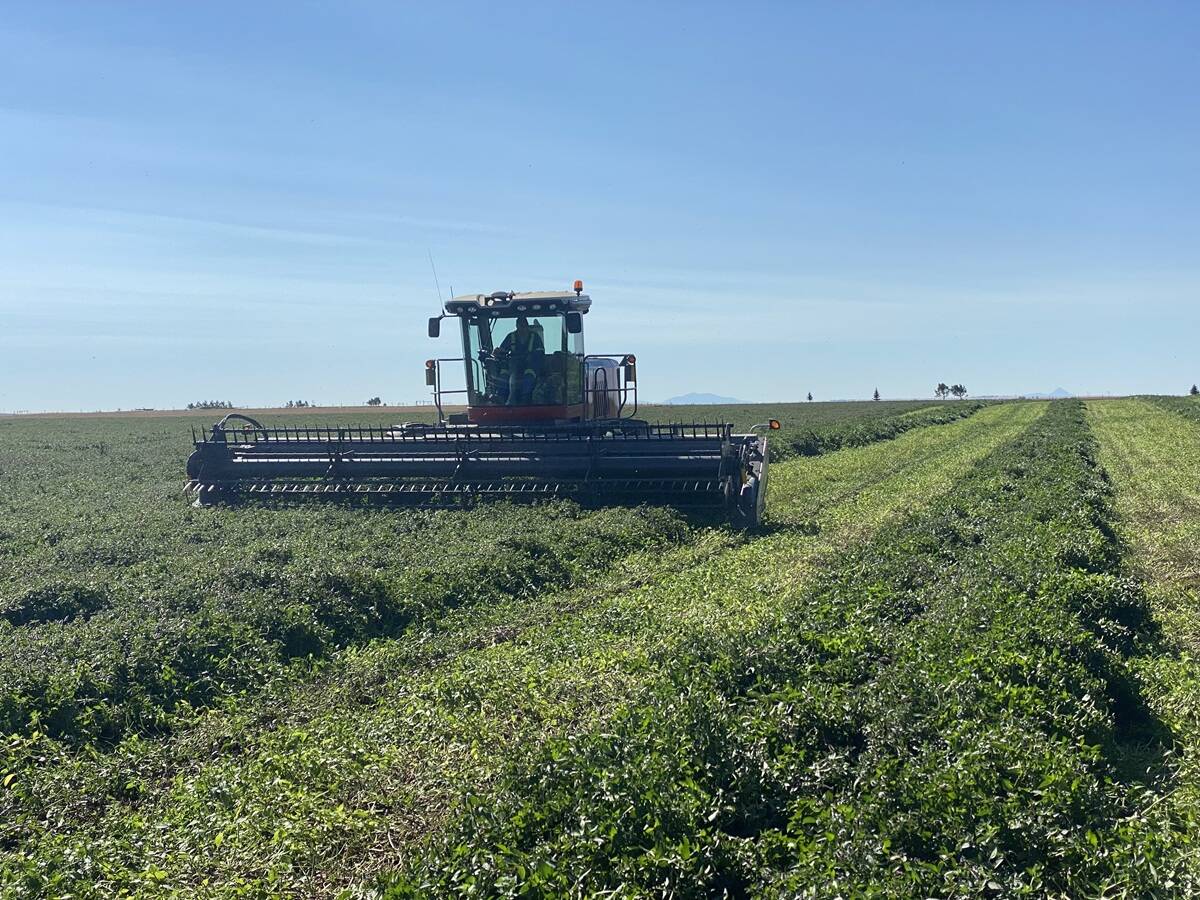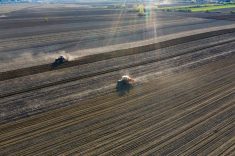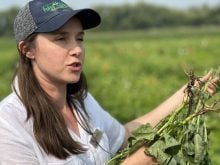Timing is everything and had everything to do with the yellowing of a barley crop near Clanwilliam, Man., last June. “I’ve never seen this in my 20 years of farming,” said Rodney, an experienced producer who farms 1,000 acres of barley and canola. Rodney called me for some advice and recommendations after he discovered his barley field was looking particularly unhealthy after a routine scout. He thought his barley plants were stressed, and he wondered if the cause could be a nutrient deficiency.
In the field, I noticed the leaves of the plants were turning yellow, especially the newest ones. Also, there were brown spots present on the lower leaves. These symptoms were uniformly distributed throughout the field.
Read Also

How a southern Alberta farm maintains mint condition
An estimated 25 per cent of North America’s mint oil is now the product of a southeastern Alberta farming business, but don’t get the idea that commercial mint production is a job for the faint of heart.
There were a few possibilities for the causes of the damage to Rodney’s barley crop: nutrient deficiency, stress due to excessive water or a tight crop rotation, incorrect rate of herbicide application, or drift from the application of glyphosate to a neighbour’s canola crop.
A tissue test revealed the barley plants were not deficient in sulphur, thus nutrient deficiency was not playing a role. Stress on the plants due to excess water from heavy precipitation that spring was also not the cause of the yellowing of Rodney’s crop because all plants — located in areas of good and bad drainage — showed symptoms.
The tight rotation of barley and canola did increase the risk of disease pressure on the crop, but I was sure it had nothing to do with the yellowing of the plants’ leaves. I concluded the brown spots on the lower leaves were a fungal infestation. Whatever was causing the yellowing of the leaves was also making the plants more susceptible to this infection as a result of the stress the crop was under. Here the tight crop rotation increased the incidence of disease — but all of this was secondary to whatever was causing the leaves to turn yellow.
Now we were left to investigate stress due to herbicide application. Before approaching his neighbour with concerns about herbicide drift (Rodney’s neighbour had recently sprayed herbicide on his glyphosate-tolerant canola), I thought we should check Rodney’s own application procedures and rates.
Rodney had sprayed his field with a Group 1 herbicide and registered tank mix four days before the symptoms appeared. His records and calculations indicated he’d done everything correctly. Also, he’d flushed his tank properly before application, and he used the correct registered tank mix. The day had been perfect for spraying at 20 C, overcast conditions and little wind.
I examined the plants again and I noticed the flag leaf was emerging and nodes were present. Also, the most severe yellowing occurred on the sixth and seventh leaves. I knew then that we were dealing with a timing issue. The recommended guidelines for that particular herbicide are to spray up to the fifth leaf stage, with the optimal stage to spray at three to four leaves. Rodney had sprayed after the fifth leaf stage — the sixth and seventh leaves should not have been present when applying this Group 1 herbicide to barley.
It’s amazing how overlooked, yet important, crop staging is. Crop protection guides, advice from your local agronomist, as well as careful consideration of the guidelines and application instructions on crop protection product labels are all resources producers can turn to for help when applying crop protect-ants.
Applying herbicide at the wrong stage stressed Rodney’s barley, causing it to yellow. That stress made his already damaged crop more susceptible to fungal infestation. I recommended Rodney apply a fungicide to prevent the disease from getting worse while his crop recovered from the stress caused by the staging error.
In the end, Rodney was a happy customer. The fungicide helped prevent more disease and the plants recovered enough to yield an average crop. Rodney and I are keeping in touch this spring on agronomic issues, strengthening our business relationship and, hopefully, improving Rodney’s yields.
StephanieRichardsisalocationassistantat RichardsonPioneerLtd.inMinnedosa,Man.














